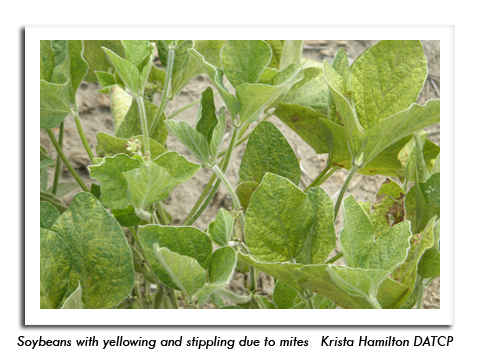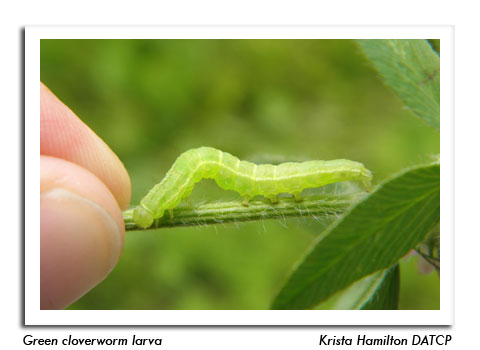
 |
|
|
Soybeans
Volume 57 Number 18 Date 08/16/2012 SOYBEAN APHID - Review of the July 23-August 1 survey data indicates that densities were at an all-time low last month. The state average aphid count based on examination of 158 soybean fields was less than three aphids per plant. Current field surveys suggest that populations are still extremely low in most fields, due to a combination of earlier unfavorable heat and spider mite controls, which are also effective against the aphids. A second set of field visits is now in progress and the results should show where populations have increased. A few exceptional soybean fields in the R4-R5.5 stages may still qualify for treatment, but most sites are beyond the R5.5 stage now and chemical control is no longer advantageous. TWO-SPOTTED SPIDER MITE - Mites have shown a marked decline as a result of chemical intervention and intermittent rainy weather. Pressure has largely subsided and further outbreaks are not anticipated this year. As is the case with the soybean aphid, treatment of this pest is not beneficial after the R5 to R5.5 or full pod growth stages. GREEN CLOVERWORM - This insect is common in soybeans across much of the state. However, populations are not nearly the levels of 2010 or 2011. Larvae range from very small to nearly full grown. --Krista Hamilton, DATCP Entomologist 


|
|
|